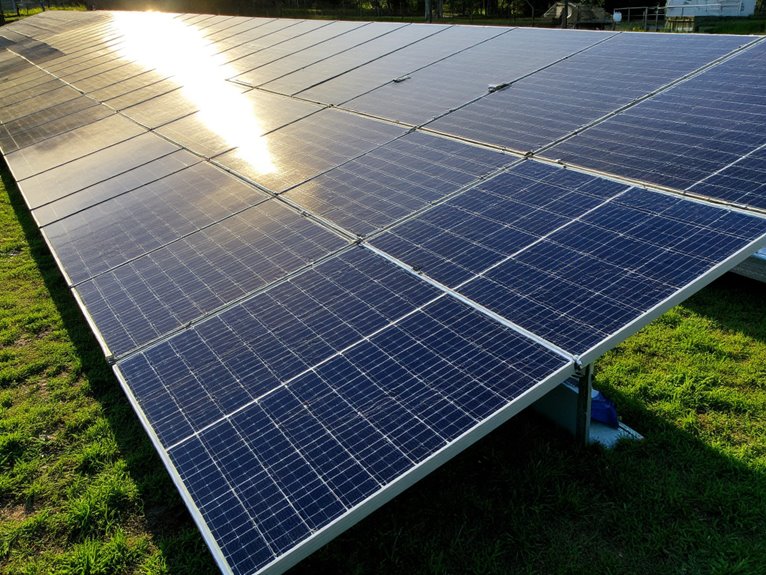What Are the Cons of Canister Stoves?
Canister stoves, despite their convenience, have several drawbacks. Environmental concerns abound, as they contribute to climate change, air pollution, and ecological degradation through fossil fuel combustion and extraction. Limited fuel options and availability can cause inconvenience and safety risks, especially in remote areas. Performance issues, such as limited flame control and noise pollution, can disrupt outdoor experiences. Additionally, canister stoves are often expensive, with high upfront costs and ongoing expenses for replacement canisters, which contribute to waste and environmental concerns. As we delve into the complexities of canister stoves, a clearer picture emerges of the trade-offs between convenience and sustainability.
We are supported by our audience. When you purchase through links on our site, we may earn an affiliate commission, at no extra cost for you. Learn more. Last update on 15th January 2026 / Images from Amazon Product Advertising API.
Environmental Impact of Canister Fuel
The combustion of canister fuel in portable stoves releases emissions that contribute to climate change, air pollution, and ecological degradation, necessitating a closer examination of the environmental implications. The burning of fossil fuels in canister stoves results in the emission of greenhouse gases, including carbon dioxide and methane, which accelerate global warming. Additionally, the release of particulate matter and volatile organic compounds contributes to air pollution, negatively impacting human health and the environment. In addition, the extraction, transportation, and storage of canister fuel also have environmental consequences, such as habitat destruction and oil spills. Recognizing and addressing these environmental concerns is crucial to mitigate the ecological footprint of canister stoves.
Limited Fuel Options and Availability
When it comes to canister stoves, users often face limitations in terms of fuel type and availability, which can significantly impact their outdoor adventures. The restricted range of fuel options can be particularly challenging, especially when traveling to remote areas where access to specific fuel types may be scarce. Furthermore, importation difficulties in certain regions can exacerbate the issue, making it essential to carefully consider fuel options and availability before embarking on a trip.
Fuel Type Limitations
Many outdoor enthusiasts are limited by the availability of fuel options for their canister stoves, particularly in remote or international locations. This limitation can be a significant drawback, as it restricts the use of canister stoves in certain areas. Canister stoves typically run on isobutane or isobutane-propane blends, which may not be readily available in all regions. This can lead to inconvenience, added cost, and even safety risks when attempting to find alternative fuel sources. Additionally, the limited fuel options may also impact the stove's performance, as some fuels may not burn efficiently or produce adequate heat. This limitation highlights the importance of researching fuel availability before setting out on an outdoor adventure with a canister stove.
Availability in Remote Areas
Remote areas often pose significant logistical challenges, particularly with respect to accessing fuel sources for canister stoves. In these regions, fuel availability is limited, and supplies may be scarce. This can lead to difficulties in maintaining a reliable fuel supply, making it difficult to rely on canister stoves as a primary cooking method.
Some of the challenges of fuel availability in remote areas include:
- Limited access to fuel suppliers or retailers
- Infrequent delivery of fuel supplies
- High transportation costs for fuel delivery
- Limited storage capacity for fuel supplies
Importation Difficulties
How do importation difficulties exacerbate the already limited fuel options and availability in remote areas, further complicating the use of canister stoves as a reliable cooking method? The answer lies in the complex web of international trade regulations, logistical challenges, and tariffs that hinder the importation of canister fuels. This results in limited access to specific fuel types, forcing users to rely on whatever is available locally. In addition, importation difficulties lead to inconsistent fuel quality, which can negatively impact stove performance and safety. As a result, users in remote areas face significant challenges in obtaining reliable and efficient fuel for their canister stoves, making alternative cooking methods more appealing.
Dependence on Non-Renewable Resources
Canister stoves rely heavily on non-renewable resources, such as propane and isobutane, which poses significant concerns regarding energy security and environmental sustainability. The limitations of these fuel sources can lead to supply chain disruptions and price volatility, ultimately affecting the reliability of canister stoves as a cooking solution. In addition, the extraction, transportation, and combustion of these fuels contribute to greenhouse gas emissions, exacerbating climate change and environmental degradation. Moreover, the dependence on these fuels perpetuates a cycle of environmental harm.
Fuel Source Limitations
Traditional fuel sources for canister stoves, such as petroleum-based liquefied gases, are finite and contribute to the depletion of non-renewable resources. This limitation has significant implications for the environment and the sustainability of canister stoves as a cooking solution. The reliance on non-renewable resources poses several concerns, including:
- Contributes to climate change through greenhouse gas emissions
- Depletes finite resources, potentially leading to scarcity and price volatility
- Supports the extraction and refining of fossil fuels, which can have negative environmental impacts
- Limits the potential for sustainable, eco-friendly cooking practices
Energy Security Risks
Reliance on non-renewable resources for fueling canister stoves poses significant energy security risks, as it exposes users to the volatility of global energy markets and the uncertainty of fuel availability. This dependence on finite resources can lead to supply chain disruptions, price fluctuations, and even fuel shortages. The concentration of fuel production in a few countries further exacerbates the issue, making canister stove users vulnerable to geopolitical tensions and supply chain disruptions. As the global demand for energy continues to rise, the risks associated with reliance on non-renewable resources will only intensify, making it essential to explore alternative fuel sources and energy-efficient solutions for outdoor enthusiasts and adventurers.
Environmental Impact Costs
What hidden costs do outdoor enthusiasts and adventurers incur when opting for canister stoves fueled by non-renewable resources, and how do these choices contribute to environmental degradation? The reliance on non-renewable energy sources has a profound impact on the environment. The extraction, refining, and burning of fossil fuels contribute to climate change, air pollution, and ecosystem disruption.
- Habitat disruption: Drilling and mining activities destroy natural habitats, threatening biodiversity and ecosystem balance.
- Greenhouse gas emissions: Burning fossil fuels releases CO2, methane, and other pollutants, accelerating climate change.
- Water pollution: Oil spills, fracking, and other extraction methods contaminate water sources, harming aquatic life.
- Land degradation: Drilling and mining activities lead to soil erosion, landslides, and decreased fertility.
Noise Pollution and Disturbance
Operating a canister stove in a pristine outdoor environment can lead to an unintended consequence: the disruption of natural serenity through noise pollution. The hissing sound of the stove's burner and the roar of the flame can be a jarring intrusion into the peaceful atmosphere of the wilderness. This noise pollution can be particularly disturbing in areas where silence is a cherished commodity, such as in national parks or remote wilderness areas. In addition, the noise can also disturb wildlife, causing them to alter their behavior or even abandon their habitats. As a result, canister stoves can have a profound impact on the natural environment, compromising the very essence of outdoor experiences. Moreover, the noise can also disrupt the solitude and tranquility that many outdoor enthusiasts seek in these areas.
Expensive and Single-Use Canisters
The cost of canister stoves is further inflated by the expensive and non-refillable canisters that power them, presenting a significant financial burden for frequent users. This expense can add up quickly, especially for those who rely on canister stoves for extended periods of time. Additionally, the single-use nature of these canisters contributes to waste and environmental concerns.
Some key drawbacks of expensive and single-use canisters include:
- High upfront cost for initial purchase
- Ongoing expense for replacement canisters
- Contribution to waste and environmental degradation
- Limited availability and accessibility in remote areas
Lack of Adjustability and Control
Flexibility in flame control is severely compromised in canister stoves, as users are often limited to a single, fixed flame setting that cannot be adjusted to suit varying cooking requirements. This lack of adjustability can lead to inefficient fuel consumption and subpar cooking performance. In contrast, other camping stoves, such as liquid-fuel or white gas stoves, typically offer more precise flame control, allowing users to fine-tune the flame to suit specific cooking tasks. The limited adjustability of canister stoves can be particularly problematic when cooking delicate dishes that require precise temperature control. As a result, users may find themselves struggling to achieve the desired cooking outcome, leading to frustration and disappointment.




